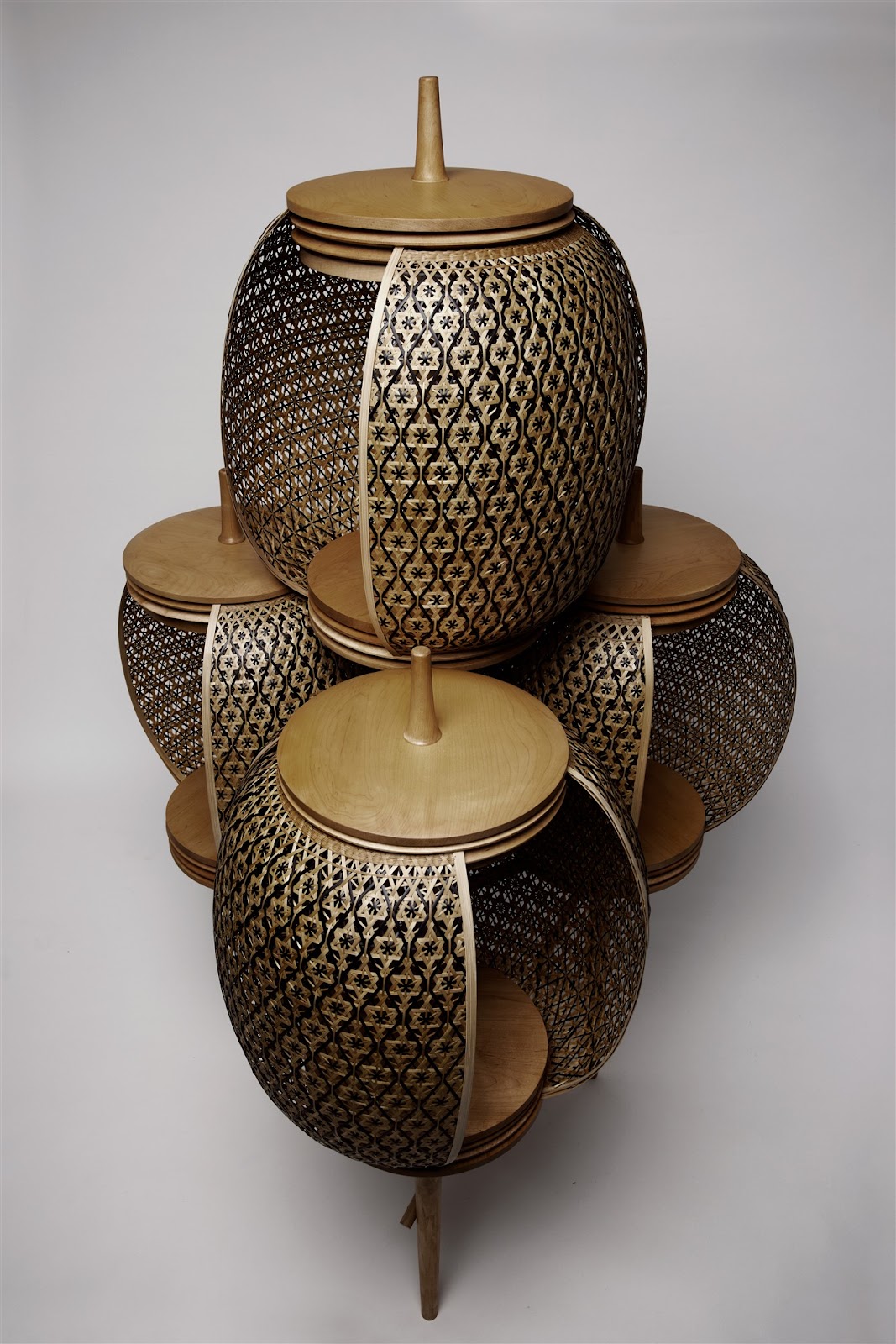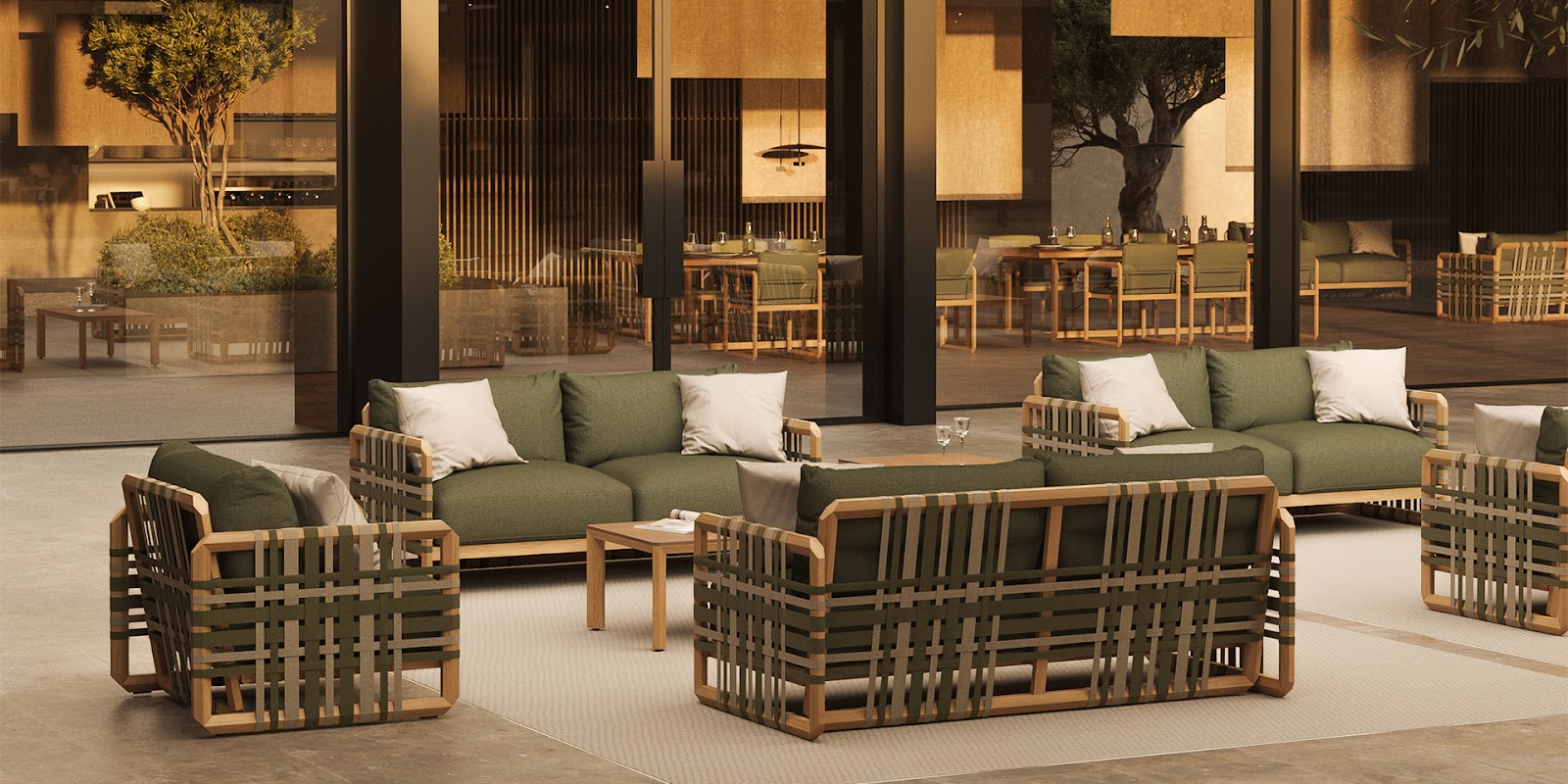Jintana, Imagination in Maple and Bamboo
Thai-born Australian furniture designer Nae Tanakorn's entry into the prestigious Australian Furniture Design Awards imagines a simpler, more harmonious way of life while showcasing impeccable craftsmanship
Responding to a brief of ‘Design the World That You Want’, the Jintana cabinet draws inspiration from Tanakorn's vision of an ideal existence, one of equality, respect, sustainability and peace. For this year’s ATDA’s he wanted to create a piece that would evoke this philosophy while also providing a counterpoint to society's capitalistic tendencies. "I feel everyone has a chaotic lifestyle these days and I thought, why are we doing this?" Tanakorn explains. "My piece is to reflect the philosophy that we need to live a simpler life."
The design concept centres around four connected
pod-like structures, each representing a "seed" of purity, potential
and new beginnings. Tanakorn elaborates, "Each pod represents an
individual decentralised community, yet still connected to each other."
The pods attach to a central triangular core with thin, tapered legs.
Wanting to echo the materials used in traditional,
sustainable communities, Tanakorn chose to work primarily with wood and bamboo.
After initially considering walnut, he settled on lighter-toned maple to better complement the bamboo. "I was interested maple because
I'd been given a piece before by my mentor, Alexandra Pontonio and she had told
me it was stable and with a beautiful grain and colour," he says. "I
did extra research and I found it to be really strong, when I knocked it, it
just didn't damage at all."
Maple proved an ideal choice for the cabinet's
demanding design. Each pod features a spike and cap made from solid maple, with
brass connectors. Tanakorn notes, "I had to drill the maple for the
supports for the pods. I was drilling 15mm into small stems and it worked
really well, it felt strong and there was no splitting." The maple for
his design was donated by Britton Timbers, who allowed him to select the boards
he needed from their extensive, quality stock.
To create the intricately woven bamboo doors,
Tanakorn collaborated with artisans at the Traditional Bamboo Handicraft Centre
in Chonburi, Eastern Thailand. There he learned about traditional bamboo basket
weaving techniques that have been passed down for generations. The doors
feature a delicate pattern called "Pigul Lai Thai" that showcases the
craftspeople's incredible skill.
With over 72 connecting pieces and 30 timber
panels, constructing the Jintana cabinet was no small feat. Tanakorn went
through an extensive development process, building prototypes to perfect the
door mechanisms and carefully crafting molds for the curved elements. The
complex organic shapes required great precision to achieve the high level of
fit and finish Tanakorn wanted.
Throughout the process, he drew inspiration from
the work of acclaimed Australian designers. "Having been been trained
and admired the likes of Alexandra Pontonio and Adam Markowitz, I know what
sort of quality someone like that would expect or be happy with and that was
what I was aiming for” he says.
Besides its striking aesthetics, the Jintana
cabinet also embodies Tanakorn's dedication to sustainability. Organic,
fast-growing bamboo makes up the bulk of the piece, with processing methods
chosen to minimise waste. The maple was also sourced with sustainability in
mind.
In the end, Nae Tanakorn's Jintana cabinet stands
as a stunning example of contemporary Australian design and a testament to
slow, intentional living. By combining his Thai heritage, masterful
craftsmanship, and sustainable sensibilities, Tanakorn has contributed a unique
voice to Australia's creative culture. The piece was shown at Stylecraft in
Melbourne as part of Melbourne Design Week 2024. (WoodNewsID)





Komentar
Posting Komentar